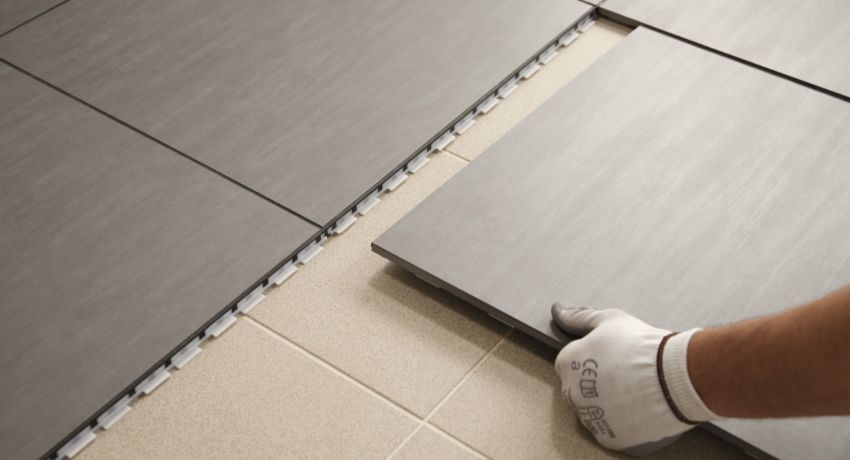One of the possibilities of effective finishing of external walls is to cover them with decorative plaster solutions. To ensure mechanical strength, wear resistance and increase the operational life of the finishing material, when applied, a mesh is used for plastering the walls of the facade. The development and production of modern reinforced mesh for plaster walls is a logical development of traditional technologies for strengthening the facade when finishing, such as using shingles, often hammered nails and the chain-link that appeared later.

Why use mesh reinforcement?
Reinforcement with a mesh when plastering external walls is used in case of weak adhesion of the components of the finishing material with the main material of the wall (concrete, aerated concrete, brick or wood). In such cases, there is a possibility of flaking and crumbling of the plaster both some time after the application of the solution, and immediately. In addition, the mesh anchors the roughing leveling layer.
The need to use a reinforcing mesh arises during the finishing works in a recently rebuilt building, when its walls are still shrinking. Deformation of the facade, occurring during advances, leads to the occurrence of cracks and violation of the integrity of the finishing coating.

What kind of mesh to use for plastering of walls depends on the material of the walls, their relief, degree of wear, on the presence of external insulation, the structure and thickness of the layer of finishing materials, and finally, on climatic conditions. But with a modern wide range of reinforcement mesh for plaster walls must meet several requirements:
- ease;
- the absence of additional loads on structural elements;
- resistance to aggressive chemical compounds and corrosion resistance;
- tensile strength combined with elasticity;
- resistance to various types of loads;
- density in the range of 150-170 g / m2 (to ensure strength and elasticity at the same time).
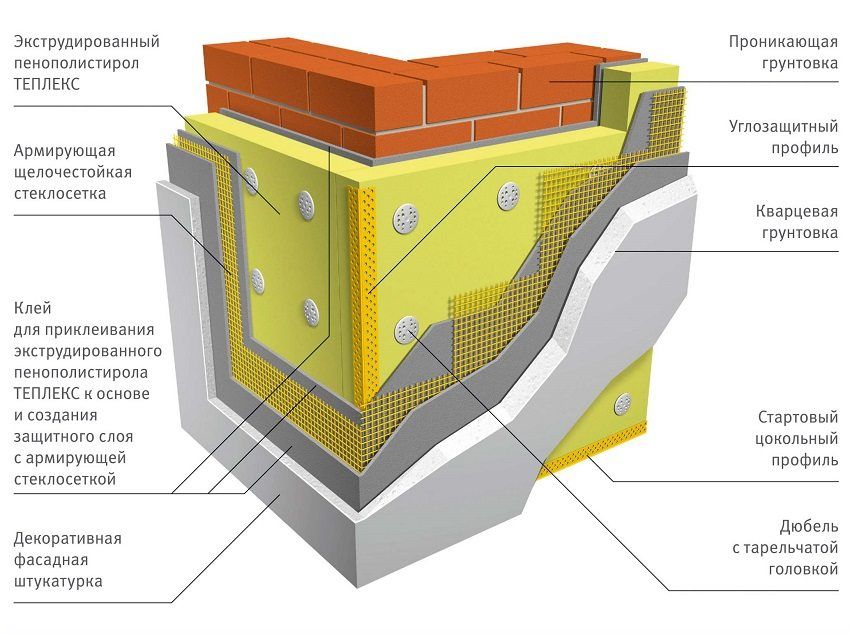
The variety of modern building and finishing materials, adhesive and leveling solutions, the use of various additives and additives in their composition has led to the expansion of the range of reinforcing products.
The main types of grids for plaster walls are distinguished by the composition of their material:
- metal;
- glass cloth;
- plastic;
- polymeric.
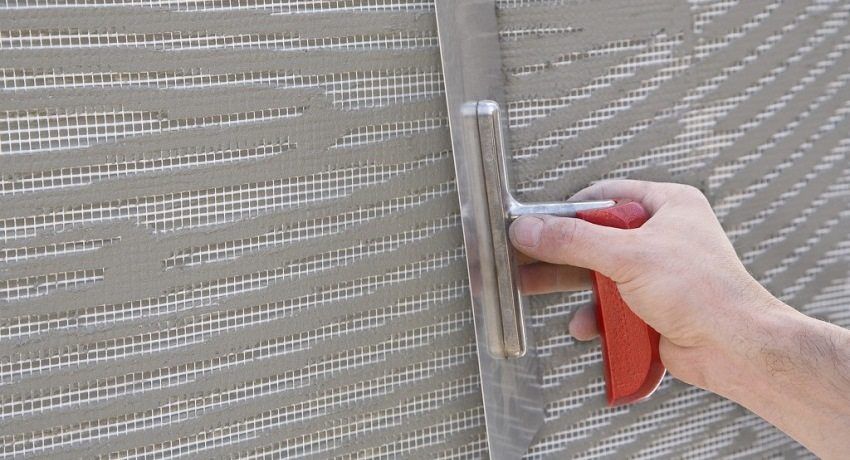
Reinforcing metal mesh for plastering of the walls of the facade is used in cases when the thickness of the finishing solution reaches 30 mm or more. If you plan to apply the plaster as thin as possible, then polymeric, plastic or fiberglass nets are used as a reinforcing layer for the walls.
Helpful advice! By itself, metal mesh for plaster walls is not designed for use in rooms with high humidity or under the exterior finish. Here it is advisable to use a galvanized mesh or with polymer protection.

There are four main types of reinforcement of metal, differing in production technology and application options.
Woven mesh
It is quite flexible and lightweight construction, woven from very thin and durable wires of various sections. When finishing the facade is used as a grid for plaster walls – galvanized, with a cell size of 1 to 1 cm. Convenience forms of implementation: in large rolls – makes it possible to use it for self-performed work.

Chain-link or plait
The chain-link netting is a metal braided construction with cells of size 2 by 2 cm, used to strengthen the walls or the facade when plastering large areas. Relevant when applying a layer thickness of 30 mm and above. For outdoor work or in rooms with high humidity, galvanized chain-link is used. Due to the mobile system of assemblies, it is especially preferable to finish walls, the material of which is compressed or expanded as the weather conditions (temperature and humidity) change, i.e. for wooden or aerated concrete walls.
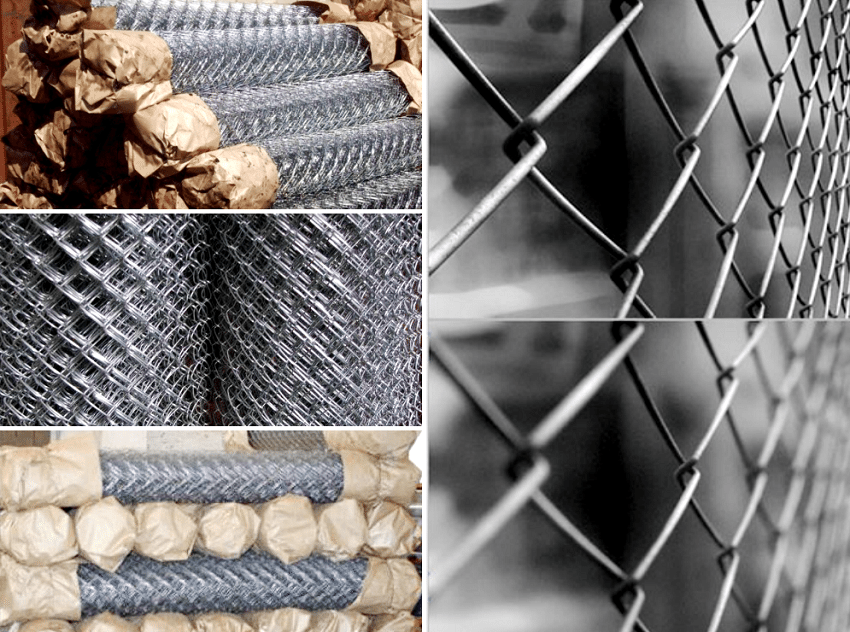
Welded mesh
In the manufacture of welded wire mesh is superimposed on each other perpendicularly, and welded at the joints, resulting in the formation of square cells. The wire is used galvanized or treated with a polymeric protective composition. This reinforced structure can be used to strengthen the plaster of the facade of buildings exposed to heavy draft: new buildings or located on mobile soils – as well as walls of aerated concrete.
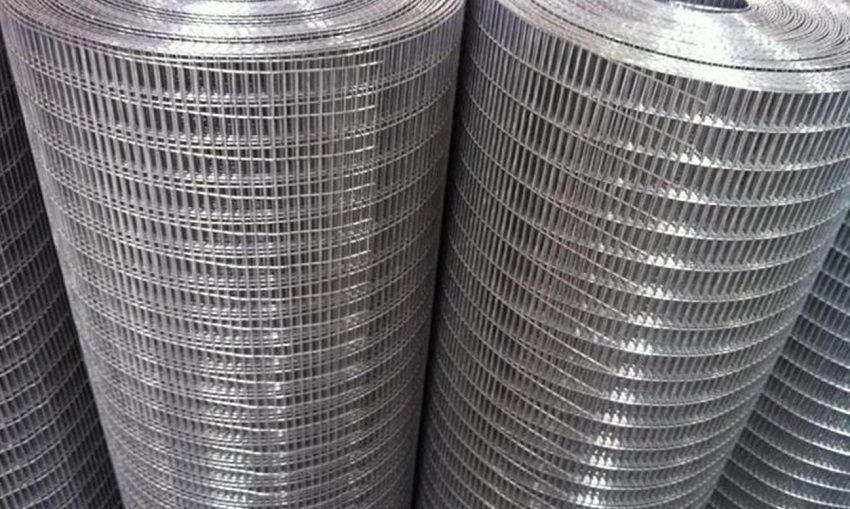
The best results in protecting the finishing coating from cracking can be achieved by using a welded mesh for plastering the walls of the facade with a cell size of about 2/3 cm. This material is available for sale packaged in rolls of meter width.
Expanded metal mesh
In the case when a low consumption of mortar is assumed for 1 square meter of surface, it is preferable to take an expanded metal mesh for plastering external walls.
Such a grid with diamond-shaped cells is obtained from a metal sheet after punching holes of the same size in it, arranged in a checkerboard pattern, and then stretching the resulting blank.
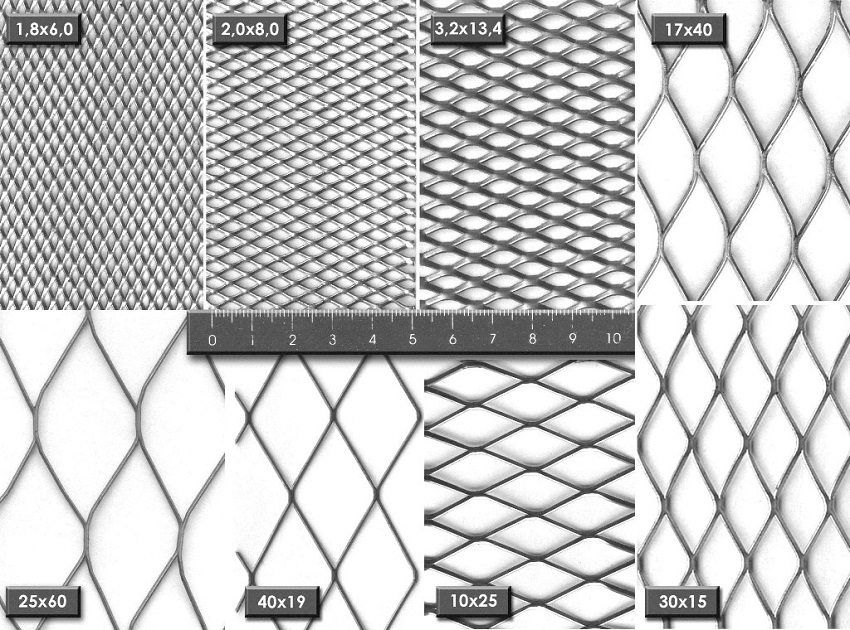
Along with metal, for the reinforcement of the walls with a grid for plaster, products from synthetic materials are also used: polymers, fiberglass, plastic.
Glass cloth mesh is considered universal. Her canvas, being made of glass without alkaline impurities in combination with aluminum as an additional component, has a high mechanical strength. Due to this, it is able to withstand a layer of plaster of large thickness (from 30 to 50 mm). In addition, the fiberglass mesh is resistant to chemical and biological effects, in particular, to the processes of decay.
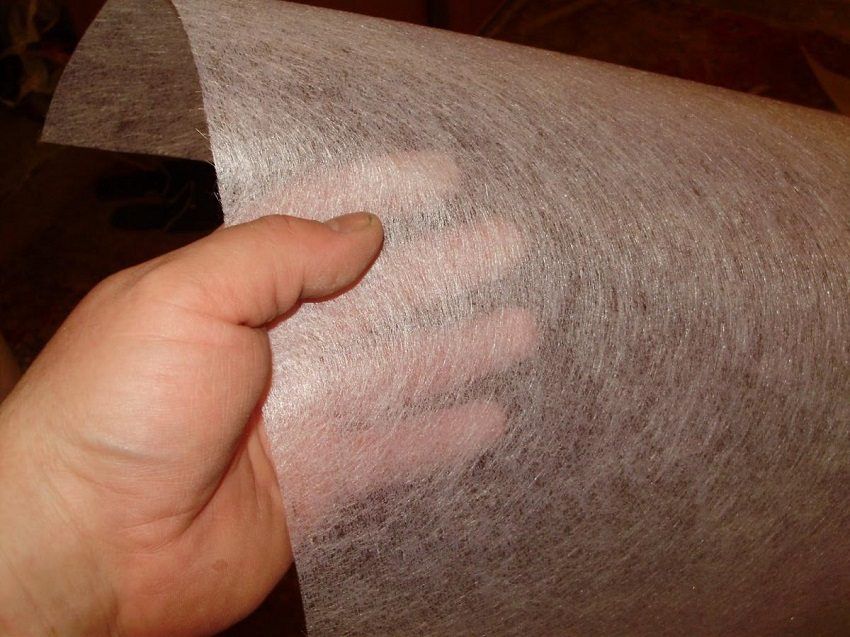
It is widely used for the reinforcement of almost all walls – especially of aerated concrete, foam blocks, bricks – with thermal insulation from most materials.
For plaster walls of brick and aerated concrete, plastic mesh is best used, which is best suited for use on insulating layers of foam or foam plaster.
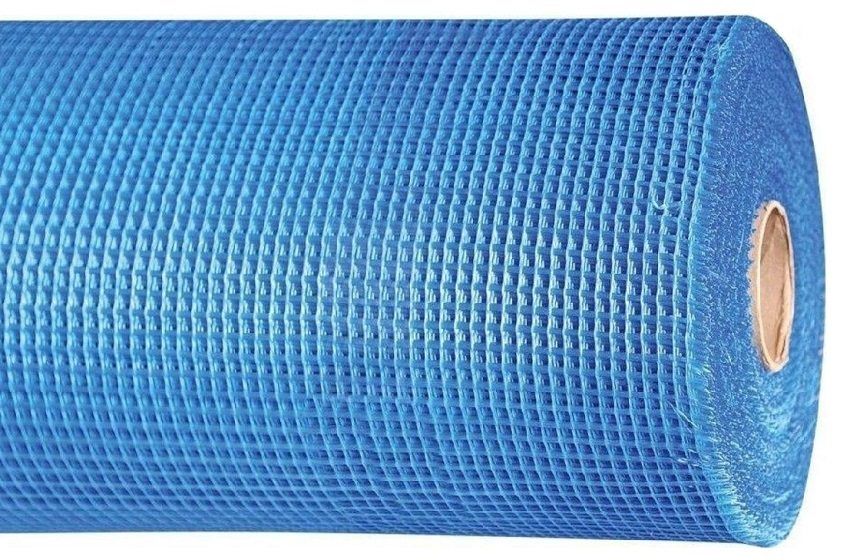
It is important! The plaster for the foam in most cases is made on a cement base (which has an alkaline reaction), respectively, to fix the plastic mesh, you should choose a mixture resistant to alkalis.
Plastic mesh for plaster walls of aerated concrete withstand temperature drops from -40 to + 100 ° C. A fine-meshed mesh is used to reinforce the walls, and a mesh with large cells – the facade and basement of the building.

Polymer mesh can be called a new word in reinforcing materials. The undoubted advantages of this reinforcing fabric are low weight, resistance to chemical attack (especially – to the action of alkalis) and corrosion, elasticity and flexibility.
Heavy-duty varieties of this type of grids are used in the construction of roads and bridges, as they are able to hold a load of heavy cement compositions. Flexibility and elasticity make it possible to use polymer grids for the reinforcement of complex relief structures: arches, openings, bevels.
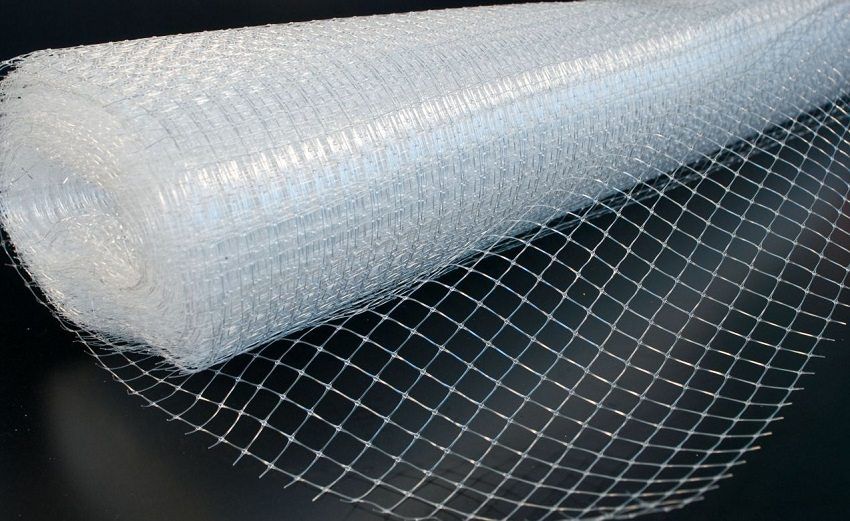
Grids of polymers do not prevent the propagation of a magnetic field, due to which they are indispensable for finishing work on conductive communications.
Helpful advice! The fastening of the facade grid must begin with areas that are difficult to process: from corners, arches, window and door slopes, as well as areas with embossed details.
We can formulate the basic principles of the choice of a reinforcing mesh:
- metal mesh is recommended to use with a layer thickness of 30 mm and above;
- for outdoor walls or in rooms with a wet microclimate, nets with galvanized or polymeric coating are used;
- grids with a moving structure of knots (chain-link) are relevant for walls made of aerated concrete, gas-silicate bricks, wood, changing from the effects of heat, cold and moisture;
- for buildings that are subject to heavy draft, a welded metal mesh is used;
- when applying a finishing plaster coating on insulation of polystyrene group preferred plastic mesh or fiberglass. At the same time they are applied on a layer of quick-drying solution;
- glass fiber mesh is used if the plaster is applied with a layer of less than 30 mm. It is preferable to use it when finishing walls with textured plaster;
- Polymer mesh is the most versatile, especially important is their use for the reinforcement of the walls of aerated concrete.
It is possible to use the majority of the above-mentioned reinforcing nets for plastering walls for self-construction and repair work. Photo materials, videos and manuals will provide the consumer with the necessary information.

